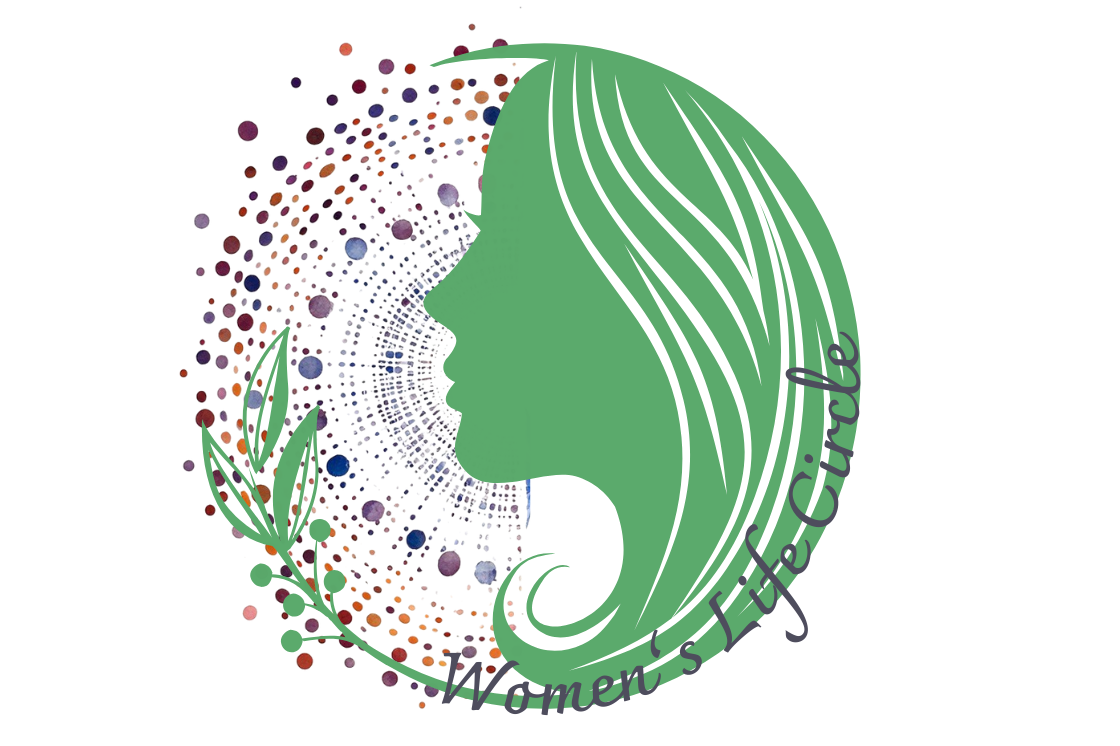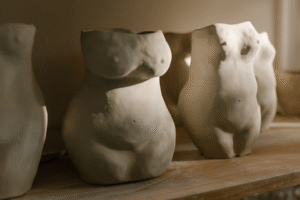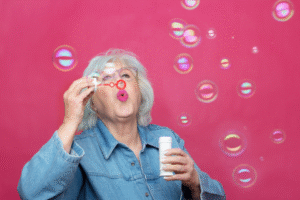The Transition of Women's Cycle between Fertility & Wisdom
The Threshold of Change
There comes a time when the monthly rhythm that once felt so steady begins to shift. Cycles shorten, then lengthen; moods rise and fall unpredictably; the body whispers of change long before menopause officially arrives. This is perimenopause—the years of transition when a woman’s body prepares to release fertility and embrace a new phase of life.
For some, this time feels turbulent, full of hot flashes, insomnia, or emotional storms. For others, it is subtle, a gentle loosening of cycles and a deepening into self. It is not the end, but a passage—a liminal space between fertility and wisdom, creation and renewal.
The Science of Perimenopause
Science helps us understand what is happening behind the scenes during this transition. Perimenopause is not a sudden stop but a gradual process, as hormones rise and fall irregularly before settling into menopause. These changes explain the physical and emotional experiences that many women report during this time.
Hormonal shifts: Estrogen and progesterone fluctuate dramatically, sometimes spiking high, sometimes dipping low.
Cycle changes: Menstrual periods may become irregular, lighter or heavier, shorter or longer.
Symptoms: Hot flashes, night sweats, insomnia, vaginal dryness, mood swings, memory lapses, weight redistribution, and decreased fertility.
This stage can last anywhere from 2 to 10 years, usually beginning in the mid-40s but sometimes earlier.
Ancient Views of Transition
Ancient cultures had their own ways of interpreting this stage, often more generous than modern society’s narrow focus on decline. In many traditions, the woman stepping away from fertility was honored as a keeper of wisdom, a spiritual guide, or a community elder. The absence of menstruation was seen not as loss but as freedom and authority.
Ancient Greece: Menopause was rarely written about, but Hippocrates saw the cessation of cycles as a “natural cooling,” a balancing of humors.
Egypt: Older women, free from fertility, often gained status as wise women, priestesses, or advisors.
Andean cultures: Women leaving fertility were respected as community elders, holders of spiritual authority.
China: In TCM, menopause was seen as the decline of “Kidney Yin” and “Blood,” calling for a gentler lifestyle, nourishing foods, and restorative herbs [6].
The Body in Transition
The body becomes a visible storyteller of this passage. Skin, hair, weight, and energy reflect the hormonal tides moving within. For some women these shifts feel destabilizing; for others, they offer a new relationship to their physical selves. To witness these changes with patience is to acknowledge that the body is simply evolving, not failing.
Skin & hair: May become drier, thinner; hair may lose volume.
Weight: Tendency to shift around the abdomen due to lower estrogen.
Energy: Fluctuates—sometimes vibrant, sometimes fatigued.
Cycle: Unpredictable, sometimes disappearing for months before returning.
Emotional Landscape
The emotional terrain of perimenopause can feel like shifting ground. Mood swings and irritability may arise, but so too can moments of deep clarity. This is a stage when many women reassess careers, relationships, and life paths. It can be unsettling, but it can also be a call toward authenticity.
Anxiety, irritability, sadness, or unexpected surges of energy.
A deeper call to evaluate life’s direction—careers, relationships, creativity.
A growing sense of freedom as fertility releases its hold.
How to cope: Normalize conversations, seek community, journal, or lean into creative expression.
Food & Nourishment
What we eat becomes a gentle form of medicine during perimenopause. The right foods can ease symptoms, balance hormones, and support long-term health, while stimulants and processed foods can intensify discomfort. Nourishment during this stage is about grounding and balance.
Supportive foods: Phytoestrogen-rich foods (soy, flax, sesame), calcium and magnesium sources (leafy greens, almonds, yogurt), whole grains, and protein.
Avoid: Excess caffeine and alcohol, as both worsen hot flashes and sleep issues.
Hydration: Herbal teas like sage, peppermint, and chamomile can be soothing.
Herbs & Natural Support
For centuries, women have turned to plants to ease this transition. Herbal remedies can support hormonal balance, soothe the nervous system, and reduce common symptoms like hot flashes or insomnia. These allies are best used consistently and with guidance.
Black cohosh: Eases hot flashes and night sweats [7].
Red clover: Rich in phytoestrogens, supports hormonal balance.
Sage: Traditionally used to reduce excessive sweating.
Ashwagandha: Calms anxiety and supports resilience.
Vitamins & Chinese Herbs
Vitamins and minerals can provide foundational support for bones, energy, and mood. In Traditional Chinese Medicine, herbs are prescribed not to “fix” menopause but to restore harmony in Yin, Yang, Qi, and Blood. This holistic view makes the experience less of a problem and more of a rebalancing.
Vitamins: Vitamin D + calcium, magnesium, B-complex.
Chinese Herbs: Shu Di Huang (Rehmannia), Bai Shao (White Peony), Gou Qi Zi (Goji berries).
Essential Oils & Aromas
Scent can be a subtle but powerful companion during perimenopause. Essential oils help to cool, calm, or uplift the spirit, offering moments of relief and renewal throughout the day.
Clary sage: Balances hormones, relieves tension.
Geranium: Stabilizes mood, uplifts emotions.
Peppermint: Cooling relief for hot flashes.
Movement, Meditation & Breath
Movement during perimenopause should be less about pushing limits and more about cultivating balance. Gentle exercise, mindful breathwork, and meditation not only ease symptoms but also reconnect women to their bodies in a compassionate way.
Yoga & tai chi: Balance hormones, reduce stress, strengthen bones.
Breathwork: Cooling pranayama (sitali) helps hot flashes.
Meditation: Supports emotional regulation and inner reflection.
The Right Environment
Environment plays an important role in how this stage is experienced. Many women find themselves drawn to quieter spaces, closer connections, and time in nature. Creating environments that nurture rather than overstimulate supports emotional and physical balance.
More quiet, more nature, more rest.
Smaller circles of deeper conversations.
Balance of solitude and meaningful social connection.
Clothing & Expression
Clothing during perimenopause can be both practical and symbolic. Breathable fabrics help with temperature shifts, while colors and styles can reflect the inner transformation taking place. What a woman chooses to wear can become a form of self-expression that honors this stage of her life.
Natural, breathable fabrics.
Loose, layered clothing.
Earthy or grounding tones that align with inner change.
Closing Reflection
Perimenopause is not an ending—it is a transition, a sacred passage into wisdom. Though it may bring turbulence, it also brings clarity. The body, no longer bound to cycles of fertility, frees a woman to channel her energy inward and outward in new ways. This stage asks for compassion, patience, and care—but in return, it offers depth, authority, and renewal.
References & Further Reading





